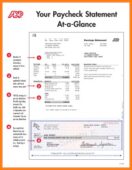Content
- Immunotherapy and radiation combinatorial trials in gynecologic cancer: A potential synergy?
- Precision sampling fuels precision oncology: an evolutionary perspective
- The forefront of ovarian cancer therapy: update on PARP inhibitors
- DNA damage response factors from diverse pathways, including DNA crosslink repair, mediate alternative end joining
- Stereospecific PARP trapping by BMN 673 and comparison with olaparib and rucaparib
- JAMA Oncology
- Legal entity responsible for the study

Result table for CD3 immunohistochemical/RNA in situ hybridization duplex assays reporting the detection of ADP-A2M10 in two of four post-infusion tumor samples collected from the study patients. H&E, hematoxylin and eosin stain; HNSCC, head and neck squamous cell carcinoma; Mel, melanoma; NE, not evaluable; PD, progressive disease; SD, stable disease; TCR, T-cell receptor; UC, urothelial carcinoma. Eligible patients underwent leukapheresis for collection of CD3+ T-cells to manufacture ADP-A2M10 .

https://adprun.net/ from 26 observational clinical studies of 3879 women with OC reported that those with BRCA-mutated cancers have a better outcome following cytoreductive surgery and platinum based chemotherapy than their non-BRCAm counterparts . The Cancer Genome Atlas Research Network carried out an analysis in which the sequencing of 316 stage-II–IV HGSOC was compared the matched normal DNA. BRCA1 and BRCA2 germline mutations were identified in 9 and 8 % of the cases, respectively. An additional 3 % showed somatic mutations of the BRCA genes; therefore, a total of 20 % of HGSOC exhibited a BRCA mutation .
Immunotherapy and radiation combinatorial trials in gynecologic cancer: A potential synergy?
If the cell cannot initiate HR, as is the case with BRCA1/2-mutant tumors, it resorts to more error-prone pathways, such as non-homologous end joining or single-strand annealing, which can cause gross chromosomal mutations, growth inhibition, and eventual cell death . Such data support the use of BRCA mutation testing in all patients with HGSOC, regardless of family history. This expansion in BRCA testing will require changes to the traditional genetic service pathways in which patients are screened and referred based on family history, moving to a more streamlined oncology-based genetic testing service. ADP-A2M4CD8, a novel T-cell therapy, is being investigated in a range of tumor types that express MAGEA4, an antigen expressed in solid tumors that investigators say represents a promising target for cellular immunotherapy.

The association showed to be more effective in BRCA wild type patients, while in BRCAm patients the differences were smaller . Then, patients with EOC with germline mutations in either BRCA1 or BRCA2 genes exhibit impaired ability to repair DNA DSB via HR, and show a heightened sensitivity to inhibitors of the BER pathway . Nine patients had AEs definitely, probably, or possibly related to ADP-A2M10 therapy . Patient 9 developed grade 3 CRS, which resolved with treatment as described below. The other developed several events, including grade 1 acute kidney injury and a grade 2 maculo-papular rash, which both resolved, and pancytopenia, which was resolving at the time of the patient’s death of PD as described below. The most common AEs reported were leukopenia/white blood cells decreased, lymphopenia/lymphocyte count decreased, and neutropenia/neutrophil count decreased, which occurred in all 10 patients.
Precision sampling fuels precision oncology: an evolutionary perspective
Of the 10 treated patients, three in dose group 1, three in dose group 3, and four in the expansion group were treated with ADP-A2M10 within the dose range of 0.09 to 13.6×109 transduced cells . There were no DLTs during the dose-escalation portion of the study and there were no apparent differences in AE grades across the cell doses of ADP-A2M10 in the two dose groups and the expansion group. Adverse events of any grade were asthenia/fatigue (61.7%), nausea (52.2%), anemia (43.5%), and increased alanine transaminase /aspartate transaminase (AST; 33.0%). Grade ≥ 3 adverse events occurred in 60.9% of patients, the most common being anemia (25.2%), thrombocytopenia (9.6%), asthenia/fatigue (8.7%), and increased levels of ALT/AST (5.2%).
- Lysosomal β-galactosylceramidase removes β-galactose from β-galactosylceramide, thus generating the oncosuppressor metabolite ceramide.
- Another possible mechanism of resistance to PARP-inhibition is loss of 53BP1.
- Recent observations have shown that GALC may exert opposite effects on tumor growth and differentiation, questioning its contribution to the sphingolipid metabolism in cancer cells and its role in tumor progression.
- The characteristics measured showed variability across patients and did not significantly differ between indications and response .
- On independent radiology review, objective responses were observed in 3 of 9 patients (33.3%) with BRCA1 alteration, 24 of 53 (45.3%) with BRCA2 alteration, 9 of 21 (42.9%) with germline BRCA alteration, and 18 of 41 (43.9%) with somatic BRCA alteration.
Median duration of response in these patients was 28 weeks and median progression-free survival was 20 weeks. Confirmed responses were also seen in patients with lung cancer and head and neck cancer. The median duration of response was 28 weeks and 2 patients had ongoing responses beyond 72 at the time of data cutoff, September 1, 2020. These data support the launch of the phase 2 SPEARHEAD-1 study of ADP-A2M4 as treatment of patients with advanced synovial sarcoma or myxoid/round cell liposarcoma. This study was a signal-seeking phase 2 trial with 62 patients with ovarian carcinoma enrolled; therefore, the results presented herein will need to be validated in a larger trial. Although the predefined statistical criteria for this study were not met (null ≤15%), the observed ORR is of interest, especially in the tBRCAwt and non-HRD patient populations; durable responses were observed across platinum status, tBRCA mutations, and tissue HRD status .
The forefront of ovarian cancer therapy: update on PARP inhibitors
“This is an in-patient trial, and the hospitals not only at MD Anderson but everywhere were worried they were going to get overwhelmed with COVID patients in the ICUs,” Hong said. Investigators are seeking a solid tumor target for T-cell therapies, said Hong, who is deputy chair of the Department of Investigational Cancer Therapeutics at The University of Texas MD Anderson Cancer Center in Houston. In this review, we discuss the preclinical, translational, and clinical studies supporting the combination of PARPi and ICB therapies as well as consider important questions to be addressed with future research. “Data from this trial have enabled rapid execution of our pivotal trial, SPEARHEAD-1, and support our aim to commercialize ADP-A2M4 as the first engineered TCR T-cell product in the US in 2022,” said Adrian Rawcliffe, CEO of Adaptimmune. After this death, the trial’s eligibility criteria and the treatment regimen used for lymphodepletion were modified. Donate Today Your gift will help support our mission to end cancer and make a difference in the lives of our patients.
SRK-181 Alone or With Anti–PD-(L)1 Therapy Elicits Early Efficacy … – OncLive
SRK-181 Alone or With Anti–PD-(L)1 Therapy Elicits Early Efficacy ….
Posted: Wed, 15 Mar 2023 21:33:11 GMT [source]
Subject has any other prior malignancy that is not considered by the Investigator to be in complete remission. Prior malignancies that have been surgically resected and show no evidence of disease are acceptable. Subject had major surgery within 4 weeks prior to lymphodepletion; subjects should have been fully recovered from any surgical-related toxicities. Surgical-related toxicities that are not clinically significant per Investigator assessment may be acceptable after discussion and agreement with the Study Physician. Subjects will be assessed for eligibility prior to leukapheresis AND prior to lymphodepleting chemotherapy and must meet all specified criteria for study participation. The safety and scientific validity of this study is the responsibility of the study sponsor and investigators.
Despite these therapeutic advances in Durable Responses With Adp with germline BRCA1/2 mutant cancers, PARP inhibitor therapy still results in variable responses between patients, and secondary resistance to therapy is inevitable. To our knowledge, this is the first study that evaluates the differential patterns of antitumor responses to PARP inhibitor monotherapy in patients with advanced solid tumors, including those with and without germline BRCA1/2 mutations. Data from our study suggest that RDR is a prevalent phenomenon, occurring in 41% of patients treated with PARP inhibitor monotherapy in our series of patients with advanced solid tumors. We identified two patterns of RDR, and showed that patients who developed early RDR had worse TTP and OS, whereas outcomes were similar between patients who developed a late RDR compared with those who did not have a RDR.